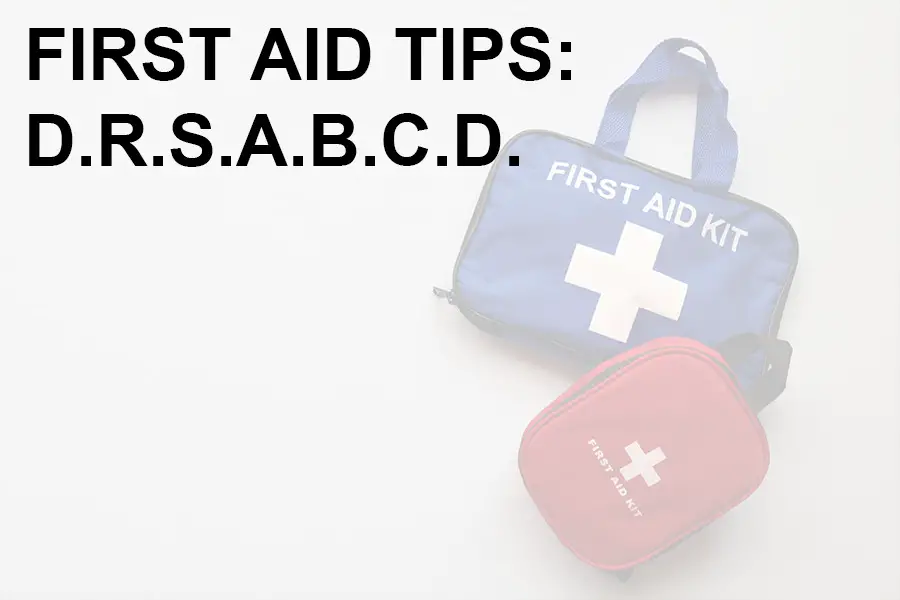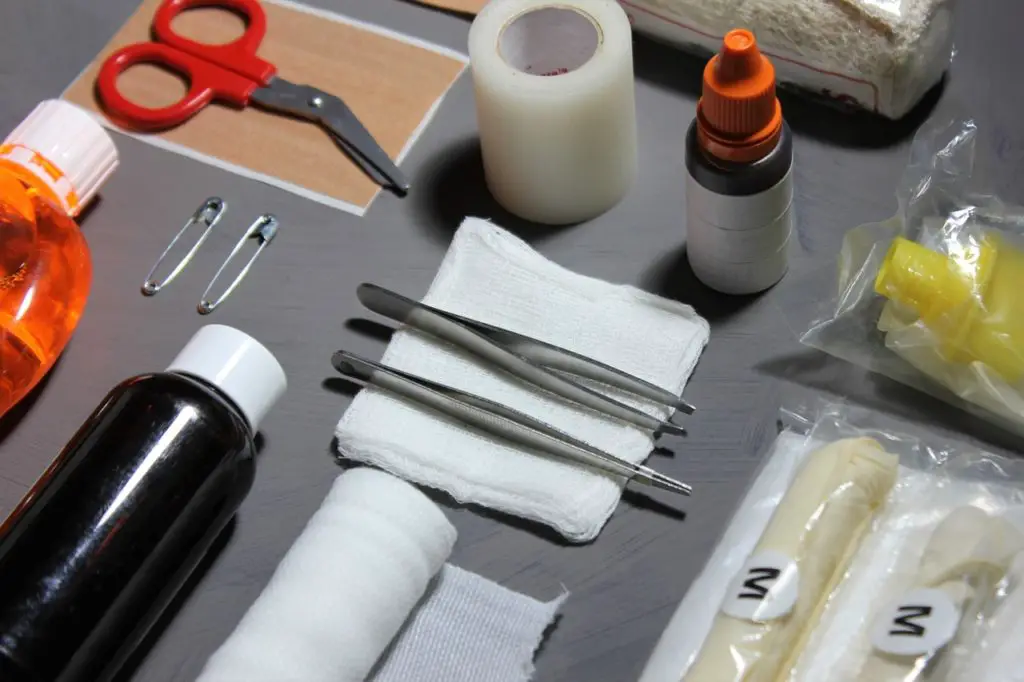There are many acronyms to help first-aid responders, both professional and civilians, to remember what actions to take in an emergency. DRSABCD is one that is primarily taught in the UK and Australia and is an expansion of the ABC’s of first aid. This article will explain what DRABCD is and what it stands for.
What does DRSABCD stand for?
- Danger
- Response
- Send for Help
- Airway
- Breathing
- CRP/Compressions
- Defibrillator
Danger
The first “D” DRSABCD means to “look out for DANGER”. This means that you need to assess the situation before jumping in to help someone in need. As you approach the situation, slow down and assess what’s happening. Take a moment to gather yourself so that you can begin to help in a calm and collected manner.
Make sure you are safe
First, make sure that you’re safe. Do not put yourself in danger – you don’t want to become a casualty yourself. If there’s no way to keep yourself safe, the best thing to do might be to only call for help. Keeping yourself safe also means using proper PPE to prevent cross-contamination or potential infections.
Make sure the injured and area is safe
Once you know you’re safe, you’ll want to make sure that the scene and those who are injured are safe. Remove any potential hazards if you can, turn off machinery, vehicles, etc. Keep onlookers at a safe distance unless they are able to help. Continue to use all of your senses and be aware of other potential hazards. Do you smell gases or something burning? Can you hear anyone else calling for help? Can you determine the mechanism of injury (MOI)? Or in other words, can you tell what caused the injury? During this time you will have to prioritize who will get help first by helping those with the most life-threatening injuries.
Response
The “R” in DRSABCD stands for “check for a RESPONSE”. When everyone is safe you can begin to render aid to those injured. Talk to them, ask questions, and see if they respond to your verbal cues. If they don’t respond to verbal cues, start by gently tapping them on the shoulder, then gently squeezing the shoulder to try to get their attention. The COWS protocol is a good way to remember how to check for responsiveness.
Send for help
The “S” in DRSABCD stands for “SEND FOR HELP”. If you can, get someone else to do it so you can focus on providing aid. Or make the call if someone else is more comfortable helping the injured person. Call your local first responders and include information like:
- Your precise location. Use landmarks as well as an address.
- The number of people hurt, ages, sex, etc.
- Try to describe the situation – how it happened, if there’s still danger, how serious it the situation is, etc.
Airway
The “A” in DRSABCD stands for “check the AIRWAY“. Make sure that the airway is clear and free from foreign objects or obstructions. Put the person on their side and use your fingers if needed.
Breathing
The “B” in DRSABCD stands for “check for BREATHING“. Listen for breathing and watch for any rise and fall of the chest. It’s recommended to do this for 10 seconds at most. If they are breathing and there are no signs of a spinal or neck injury, put them in the recovery position. If the person is unconscious, start CPR.
CPR/Compressions
The “C” in DRSABCD stands for “CPR and COMPRESSIONS”. This is the time to recall your CPR training and perform it with confidence. If you haven’t taken a CPR class, they are highly recommended for everyone. Make sure to continue until help arrives.
Defibrillator
The second “D” in DRABCD stands for “DEFIBRILLATOR”. Have someone go get one if there is one available and prepare it for use. Again, this is where you will use your CPR training to effectively use the defibrillator.
Final thoughts
This was a quick breakdown of what DRSABCD stands for, and what it entails. If you want to learn CPR and fully understand how to implement the DRSABCD protocol, we recommend you receive formal training.




